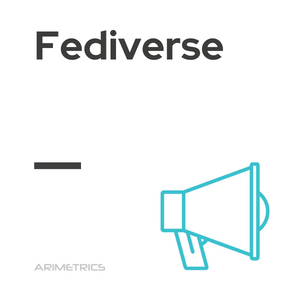
Definition:
Fediverse, a combination between the words federation and diverse, is a term that refers to a group of open and decentralized social networks that intend to compete, for the moment without excessive success, with traditional networks. It is based on the philosophy of free software or, what is the same, configured with an open source code and available to all users.
They are decentralized networks, that is, they are not hosted on a specific server, but allow the user to choose the server they prefer. This distribution in what in the Fediverse are called ‘estancias’ is another step in the process to circumvent the control of large corporations. Users from different rooms can interact with each other. On the website of this ‘digital federation’ they explain that the operation is similar to that of emails, when someone receives in Gmail a message sent from Hotmail, for example. To facilitate the search for people you are interested in following, you should know that the nicknames are formed by the username and the instance name (suario@instancia.com).
Philosophy of the Fetiverse
They share the philosophy of social networks traditions and their main objective is to allow some users connect with others to exchange information, images, videos, memes, etc. One of the advantages of these alternative social networks is that there is no censorship in them (although each instance is governed by rules) and current issues are discussed in a less hostile environment and, in general, without haters.
As they explain themselves on their official website, the Fediverse emerged as “a feudal system in which power and data are decentralized and dispersed across multiple lands, while major corporations became kings (or tyrants?) of their own huge territory, surrounded by high fences” and with the right to make decisions, control data and self-censor”.
It works through the OStatus and ActivityPub protocols and its best known application is Mastodon, the so-called ‘open Twitter’.
The origin of the Fediverse

Its users share the conviction to stand up to large companies, control the contents (both those who publish and those who access), avoid mass advertising and the sale of personal data and flee from the tense confrontations caused by sensitive current issues in traditional social networks.
Precisely, it feeds mainly on users of these other networks,disenchanted by the climate of tension, but also angry about the new rules that govern their operation. Although on the official website of the Fediverse These mass exoduses from Facebook and Twitter occur cyclically once or twice a year, the most notable user increases were experienced in 2016, when the leading microblogging network changed the algorithm that regulated what appeared on the timeline, and in 2018, after the closure of many accounts – some with thousands of followers – for using allegedly offensive expressions.
Data breach scandals at Facebook and the growing movement to return internet power to users have also benefited the Fediverse.
What networks make up the Fetiverse?

- Mastodon. It is the best known and the one with the most users. To start using it, it is necessary to choose an instance based on the interests, the rules of operation or the type of conversation that is preferred, and make a request to be admitted. The best known is that of the creator of the network, Eugene Rochko, and is called simply ‘social’.
- Friendi.ca. It is considered as the alternative to Facebook. Created in 2010, it allows you to share contacts with Twitter or Diaspora (another social network) and publish at the same time on WordPress, Facebook or Twitter.
- Peertube. It is a video platform similar to YouTube or Vimeo. Its launch has been financed through a crowdfunding launched by its creators.
- PixelFed. The so-called ‘free Instagram’ allows you to publish photos that can be retouched with filters and shows the publications of our colleagues in chronological order. Its creators are working to allow users from different instances to interact with each other and to create their own ‘stories’.
The Fediverse is made up of other networks, such as Plume (equivalent to Blogger), Nextcloud (similar to Dropbox) or Funkwhale (the free Spotify).
Solid: the next open-source project
Tim Berners-Lee, one of the fathers of the internet and who is behind the Fediverse revolution, is preparing the launch of a new decentralized and open internet called Solid. Its operation is based on the belief that the power of the Internet must return to users and that it is necessary to prevent it from becoming a purely advertising environment. In this way, Solid will allow users to store all their data in a virtual USB (‘pod’) and decide which ones they really need to use each time they connect.
Solid will arrive accompanied by a voice assistant, Charlie,which will not store user information to impact you later with advertising or allow large companies to access that data.
